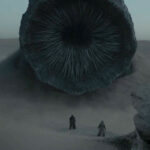In writing this piece, I wanted to interview someone on the often overlooked inclusion of creation myth in developmental biology. I reached out to my former professor, Dr. Wolkow, because he was passionate about ancient mythology and effective at engaging his students. Dr. Wolkow is a senior lecturer at UGA who teaches classical mythology from a variety of ancient civilizations. Dr. Wolkow remarked that the purpose of myth is to “bring order to chaos and help us understand the world around usâ€. Ancient cultures created these myths based on their own interactions, which actually aren't that different from our own. Dr. Wolkow stated that “myth is human experience on the grand stage†– it allows us to step back and look at a situation from another point of view. Specifically, Dr. Wolkow stated that “scientists can learn about their own origins from looking to the past,†which summarizes the importance of this article.
Ancient science started with curiosity. People made observations and wondered about the mystery of life before written word, just the same as we do now. Cyclopia and sirenomelia, two developmental disorders from embryonic defects, are coined terms inspired by the many myths of cyclops and mermaids. Even though we know more about the genetic mechanism behind many of these defects today, ancient art and myth can help us to understand the implications of these mutations long before technological advances and modern medicine. The history of developmental biology and the human fascination with embryogenesis are intertwined, revealing the secrets of the mystery of life. Although it may not be intuitive, many ancient mythologies were based on scientific observations.
Embryonic development has fascinated humankind for centuries, which is why mythology often reflects this interest. In ancient Chinese poetry, the process of embryonic development is outlined across the nine months of gestation, detailing the organs and body parts formed during each month. The author equates body part formation during development to personal growth, reflecting the importance of enlightenment and transformation in that time. Remarkably, the descriptions of fetal completeness by each stage of pregnancy are quite accurate – scholars estimate that through miscarriage and birth at different stages, people were able to document the external and internal fetal features.
In ancient Mesoamerican myth, Tlatilco sculptures show a “pretty lady†with two faces, or a third eye, resembling diprosopus (conjoined twins with a facial duplication). These myths were an artistic way to see the world from a different perspective, serving as a mode for ancient civilizations to record and communicate their observations. Many developmental mutations have been around for centuries, and the historical accounts can provide context for the environmental factors influencing the defect.
Ancient texts from China show evidence of c-sections, termed as “split side birthâ€, usually referring to an inauspicious, traumatic birth. This practice most likely allowed doctors an insight into embryonic development and how the fetus lives in the womb. As technology and medicine advanced, our ability to discover once hidden details of embryonic development were unshielded. We now have the capabilities to perform ultrasounds in 3D, to sequence parental and zygotic genomes to find mutations, to culture stem cells in a dish, and to fertilize eggs in vitro.
Although all of these technologies are revolutionary, that does not mean scientists should neglect the past. Historically, scientists found out a lot of information with limited tools, using their own ingenuity to overcome the limitations of their time. For example, in the late 1800's, a scientist, Otto Zacharias, learned about forelimb mutations by a chance encounter with a pig with thumbs in the market. This pig had an embryonic mutation that led to the development of thumbs where they are normally absent in pigs. Zacharias sent the pig foot to Charles Darwin, and the correspondence from this finding set the stage for future scientists to research developmental mutations.
The process of the creation of the world, and the beings within it, follows a theme of transformation in ancient myth. Starting from almost nothing, a variety of pieces and unrelated systems come together to create one functional unit. The beauty of developmental biology is that it is within us all – we are constantly developing into the people we will become.
About the Author
Kendall Clay is a fourth-year Neuroscience PhD candidate in the Roberts-Galbraith lab. She studies genes responsible for the regeneration of dopaminergic neurons in worms called planarians. Her main interests include genetics, disease, and regeneration. Outside of the lab, Kendall enjoys singing, embroidering, and hanging out with her cats, Baby and Sporty. You can contact Kendall at Kendall.clay@uga.edu.
- Kendall Clayhttps://athensscienceobserver.com/author/kendall-clay/
- Kendall Clayhttps://athensscienceobserver.com/author/kendall-clay/








